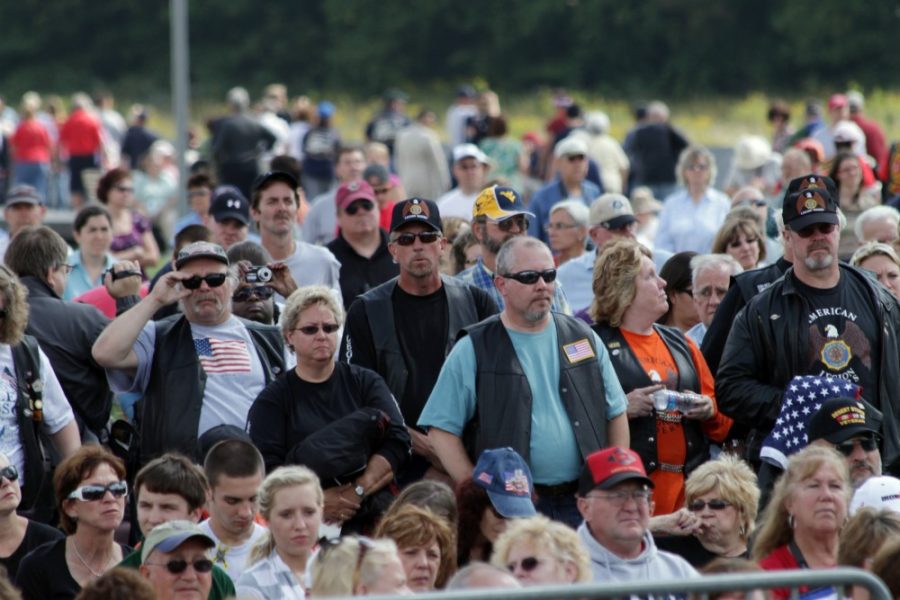SHANKSVILLE, Pa. — FBI Special Agent John Larsen spent most of the two weeks after 9/11 on his knees in an old coal field, wearing a hazmat suit, rooting through the pulverized remains of United Flight 93.
Larsen, who spoke at a panel discussion at the Flight 93 National Memorial on Sunday, remembers arriving from Chicago just after Sept. 11, 2001, looking down from the hillside above the crash site into a blackened crater and saying, “Where’s the plane?”
Working around the clock, Larsen and hundreds of other investigators braved sharp-edged aircraft debris and pools of fuel oil and other toxic materials in their effort to determine who and what brought down the Boeing 757.
Their efforts yielded tons of material: the critical data and voice recorders that established the chronology of bone-chilling events on the plane, and some human remains that brought a measure of solace to families of the 40 passengers and crew who lost their lives.
Buried in the silt, 300 yards away, was a key piece of evidence that helped tie the crash to the larger 9/11 terrorist plot: one of the metal shanks used to hijack the plane, along with the burned remnants of a passport clearly picturing one of the hijackers.
Larsen, now retired, joined two other top investigators on the case — who spoke together publicly for the first time before a rapt audience of 250 at the crash site — as part of the Flight 93 anniversary commemoration.
The event was held under dramatically cloud-filled skies in a packed tent on the site of the future visitors center and museum complex in Somerset County.
The agents recalled their own experiences of 9/11, starting the day in various parts of the country at training events or meetings, and thinking when they heard that an aircraft had hit the World Trade Center that it was an accident.
As soon as the second plane hit the World Trade Center, the men said, they realized the United States was under terrorist attack — their worst nightmare had come true — and they scrambled into action.
John Shea, former special agent in charge of the Pittsburgh FBI office, remembers the rapid mobilization of the small army that worked at the site — 1,000 people in all — in the weeks after 9/11, from the state troopers who patrolled the perimeter on horseback, sitting by campfires at night, to Red Cross workers who provided support services.
He recalls being struck by the enormity of the task and the fear that this was the beginning of a longer war on U.S. soil.
“What we didn’t know was, is this a single-day event or are we looking at other attacks on bridges and tunnels, infrastructure elsewhere in the country?” Shea said.
He said that as conspiracy theories cropped up alleging U.S. fighter jets had shot down the plane, he consulted with a National Transportation Safety Board accident expert about how best to respond.
“There would have been a huge debris field if it had been shot down, and there was none,” he said. “There was a hole filled with heavy plane parts, and the lighter parts of the aircraft and other material was carried by winds and ended up in trees.”
Todd McCall, a former head of the FBI’s evidence response team who is now an FBI section chief handling computer evidence, has worked on global terror probes from the Oklahoma City bombing to the attacks on the U.S. Embassies in Tanzania and Kenya.
He called the Flight 93 investigation a “massive operation” that involved a range of experts, from those working with tiny fragments of human remains and plane pieces the size of a quarter to the young arborists who scaled the flame-scarred hemlock trees alongside the crash site to dislodge parts of the plane’s fuselage.
Larsen said the hijackers likely thought their belongings would disappear with them in the fiery wreckage, but they did not.
They had multiple passports and small Qurans, he said, that yielded important clues.
“This is how you make a case,” Larson said. “The World Trade Center, from an evidentiary standpoint, didn’t yield much. But this was very fruitful.”
McCall shed light on one of the mysteries that linger.
One audience member asked whether passengers might have taken control of the plane during the counterassault that was caught in dramatic detail in the now-famous cellphone calls and on the plane’s cockpit voice recorder.
“There was a struggle in the front of the aircraft,” he said. “But no passenger made it into the pilot’s seat.”









